An Original Gulf Livery Car – 1968 & 1969 LeMans Winning Ford GT40

Today you can see the powder blue and marigold Gulf Oil racing colors on just about anything with wheels. A quick image search produces photos of bicycles, Mazda Miatas, DeLoreans, smart cars and even a Tata Nano wearing the livery. Gulf Oil itself has sponsored a number of widely varying race cars that have carried the paint scheme. With so many cars having worn Gulf’s iconic colors it’s easy to forget that there was a time when those colors were worn by a single racing team, running Ford GT40s. As it happens, though, the first Gulf livery GT40 that raced was actually painted a different shade of blue.
The original Ford GT40 that wore Gulf corporate colors was raced by Gulf VP Grady Davis.
The original race car painted in Gulf Oil colors was a Ford GT40 (chassis that was raced at Daytona and Sebring in 1967 as an independent entry by Gulf Oil executive vice president Grady Davis. It carried Gulf’s corporate colors of dark blue and orange. In 1967, for the upcoming season the CSI (Commission Sportive Internationale, the sporting arm of the FIA) reduced allowable engine displacement in Group 6 prototype endurance cars to 3.0 liters. That meant that the car that won LeMans in 1967, the Ford GT40 Mk IV with its 7 liter, 427 cubic inch engine, would not be able to defend its title. Having won at LeMans two years running, Henry Ford II had nothing else to prove and shuttered their endurance racing effort. John Wyer, who had an important role in the development of the GT40, realized that the platform could compete at LeMans as a Group 4 sports car, so J.W. Automotive Engineering took over management of the team and arranged for sponsorship from Gulf Oil, renaming the cars Mirages.
Three Mirages were built and they were painted in the now familiar powder blue, not Gulf’s indigo. The colors were specified by Davis, who thought the lighter color was more exciting. Gulf had earlier acquired the Wilshire Oil Company of California, whose corporate colors were powder blue and orange and Davis wanted to use those colors. He may have been on to something. The lighter blue and that shade of orange are considered “equiluminant” colors. The human eye has a hard time perceiving the edges of objects when the objects and their background colors have similar luminance. That makes the edges seem to vibrate which give this particular color combination a lot of visual pop. The final livery actually includes a dark blue hairline border around the orange, which reduces the optical illusion and any visual discomfort while maintaining most of the visual impact.
Graphic designer Wade Johnson has an interesting post about why the Gulf livery works so well on race cars, particularly endurance sports cars like those that race at LeMans:
For me, when I think about what is from a design perspective that makes Gulf racing cars work, it is a combination of things; First there is the intense color pallet which was different from any other at the time it was introduced. Then there are the classic sweeping lines of the Le Mans cars. Long low to the ground, sinuous sweeping arcs that visually scream speed. Then There is a consistent shape that is used across all the cars in the livery. Oh, and that three prong stripe that runs along the bottom edges of the car, gathers at the nose and sweeps backward to the rear of the car. The stripe might vary slightly in shape, but it is always recognizable across all of the cars throughout Gulf’s racing heritage starting in the mid 1960′s. No matter what car this color and graphic scheme is applied to, it always reads Gulf Racing. It is an unmistakable color and design combination even almost 40 years after being introduced.
Only one of the original three Mirages has survived. Of the other two, one was wrecked and destroyed and the other was rebuilt into GT40 A new Mirage tub was used to build and a standard GT40 Mk I tub was used to build up Two more cars were built up by JWAE as spares. The cars featured something relatively new then, carbon fiber reinforced body panels. Those panels were shaped slightly different than the GT40 Mk IIs, with a wider rear clamshell that could accommodate the deeply offset wide BRM magnesium wheels, painted in matching orange.
Cars 1075 and 1076 went on to great racing success, with doing the near impossible, back to back overall wins at LeMans using a car generally considered to be obsolete. It was the first time at LeMans that the same chassis had won twice. Pedro Rodriguez and Lucien Bianchi drove 1075 to its first Le Mans win in 1968 and Jacky Ickx and Jackie Oliver won with it in 1969. In 1968, the same car won the BOAC International 500, the Spa 1000-kilometer race, and the Watkins Glen 6-hour endurance race, while in 1969 it also won the Sebring 12-hour race. Any one of those victories would give a race car unique provenance, but you’d be hard pressed to think of another single racing car with victories at so many marquee races. Though I agree with Johnson about how well the Gulf livery works visually, the fact that the car won so many important races, including the repeat at LeMans, is undoubtedly a factor in how iconic the livery has become.
Ford GT40s aren’t the only shapes that look good in Gulf livery.
Ironically, it was because another LeMans winner, the GT40 Mk IV that won in 1967, was damaged that I was able to get these photographs. The ’68 & ’69 winner is currently on display in the Racing In America section of the Henry Ford Museum’s Driving America exhibit, apparently on loan. The GT40 Mk IV driven at victory by Dan Gurney and A.J. Foyt that’s normally in that spot in the museum is now at Gurney’s All American Racers shop in California where it is undergoing a “sensitive restoration” and preservation after getting damaged in transit for the Goodwood Revival. One assumes the intent is to preserve some of that car’s racing scars, like the less than concours level repairs to racing damage that you can see on rocker panels.
If you’d like to read more about the Gulf livery Mirages and GT40s, there’s a website devoted to the five original cars and the Ford museum’s transportation curator, Matt Anderson has put together a history of chassis . If you’d like to reproduce the Gulf racing livery on your own ride (or whatever else you think would look cool in those colors), the Llewellyn Rylands pigments are 3707 Zenith Blue, and 3957 Tangerine, with corresponding Dulux color codes of Powder Blue and Marigold
Ronnie Schreiber edits Cars In Depth, a realistic perspective on cars & car culture and the original 3D car site. If you found this post worthwhile, you can get a parallax view at Cars In Depth. If the 3D thing freaks you out, don’t worry, all the photo and video players in use at the site have mono options. Thanks for reading – RJS

Ronnie Schreiber edits Cars In Depth, the original 3D car site.
More by Ronnie Schreiber
Latest Car Reviews
Read moreLatest Product Reviews
Read moreRecent Comments
- V8fairy Not scared, but I would be reluctant to put my trust in it. The technology is just not quite there yet
- V8fairy Headlights that switch on/off with the ignition - similar to the requirement that Sweden has- lights must run any time the car is on.Definitely knobs and buttons, touchscreens should only be for navigation and phone mirroring and configuration of non essential items like stereo balance/ fade etc>Bagpipes for following too close.A following distance warning system - I'd be happy to see made mandatory. And bagpipes would be a good choice for this, so hard to put up with!ABS probably should be a mandatory requirementI personally would like to have blind spot monitoring, although should absolutely NOT be mandatory. Is there a blind spot monitoring kit that could be rerofitted to a 1980 Cadillac?
- IBx1 A manual transmission
- Bd2 All these inane posts (often referencing Hyundai, Kia) the past week are by "Anal" who has been using my handle, so just ignore them...
- 3-On-The-Tree I was disappointed that when I bought my 2002 Suzuki GSX1300R that the Europeans put a mandatory speed limiter on it from 197mph down to 186mph for the 2002 year U.S models.


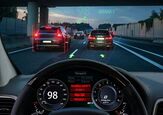






















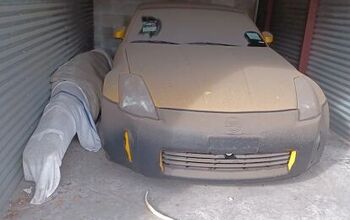

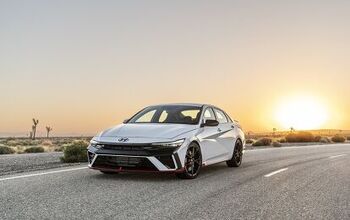






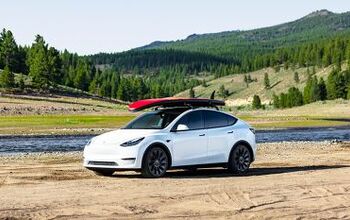




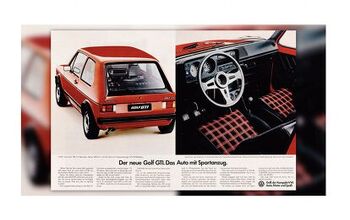

Comments
Join the conversation
When I decided to do a custom paint job on my computer case a few years back I was searching for a nice blue color scheme and came across the Pontiac STP blue for Petty's car and then the Gulf blue in a color catalog. I was completely torn but after doing some searches on both I ended up going gulf blue because it is visually popping. Sadly I gave the case to cousin for their kid because he loved racing and I had done it with a proper Gulf livery overall. I'll have to see if I can find the pictures for it. I'm sure I took plenty because I was proud of how nicely it turned out.
great article Ronnie. truly iconic colors on a beautiful racecar.